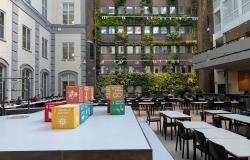
To be reached, the 17 Sustainable Development Goals (SDGs) must be meaningfully translated from the global to the national and local levels. Although such translation brings local perspectives into policies, existing evidence suggests that problems nonetheless arise. This study focuses on tracing the textual pathways from the SDGs to Ethiopia's National Development Plan. Using Steiner-Khamsi's notion of global-to-local policy translation, we ask: How do national-level texts align with or integrate the global SDGs and become reflected at the local level? The results indicate that translational processes are contingent on a chain of meaning creation, transmission, and interpretation as policies travel from global to local contexts. Thus, this study claims that global-to-local translation entails the conscious selection and re-creation of locally appropriate texts. This highlights how, in the translation process, adding, transforming, or otherwise deviating from the original content to adapt to a local context can cause tensions, dilemmas, and paradoxes.
Policy implications
- Policy translation is a process of multiplicity that does not unfold in a predetermined manner following some form of dogmatic translation scheme. Policy actors must be aware of the inherent translation process of formation, interpretation, and contextualization. Rather, this study argues that policy translation is an ‘n-way, not one-way’ process.
- The SDGs' implementation into national policies is contingent on several translational moves involving the modification, addition, substitution, and omission of manifest and latent meaning. Such a Global to local policy translation process, to adapt to a local context can cause tensions, dilemmas, and paradoxes. Thus, local implementers should consider the micropolitics that determine the translation outcome.
- Although the policy vocabularies at the global and the local levels are similar, the meanings of concepts may vary during translation and remain dependent on the local state for implementation in cases where spatial and local contexts are crucial. Local actors should note that local problems are sometimes framed according to pre-packaged global solutions.
- The calls to adopt and mainstream the SDGs into domestic policies and plans, and to integrate the three dimensions of sustainable development into those policies are unprecedented in low-income countries such as Ethiopia. It must be noted, however, that local realities often override the vision of the SDGs, clearly revealing a tension between global aspirations and goals, and national priorities and needs.
Photo by Ground Helio